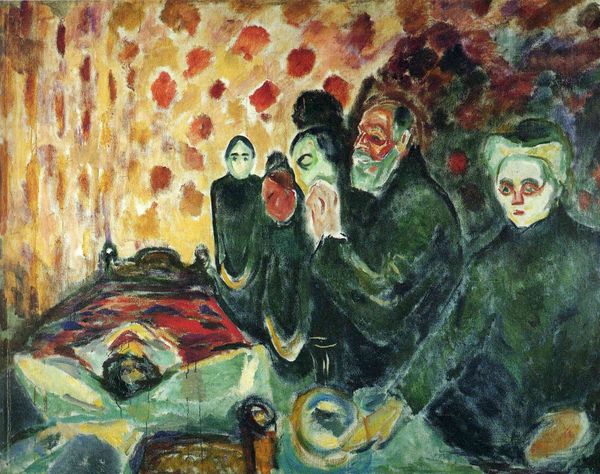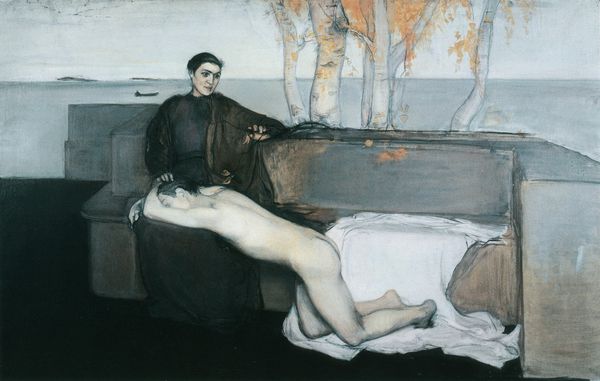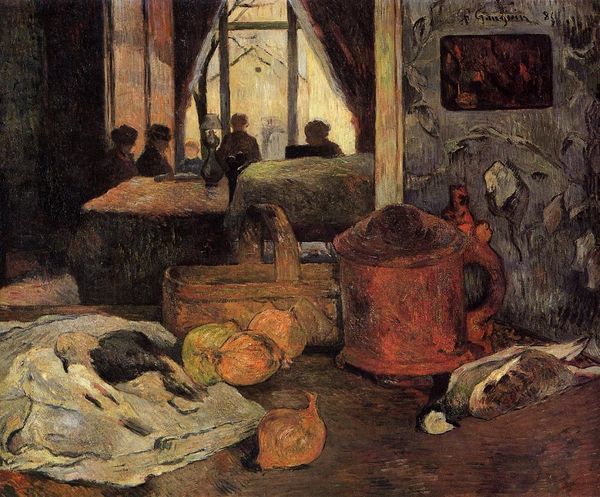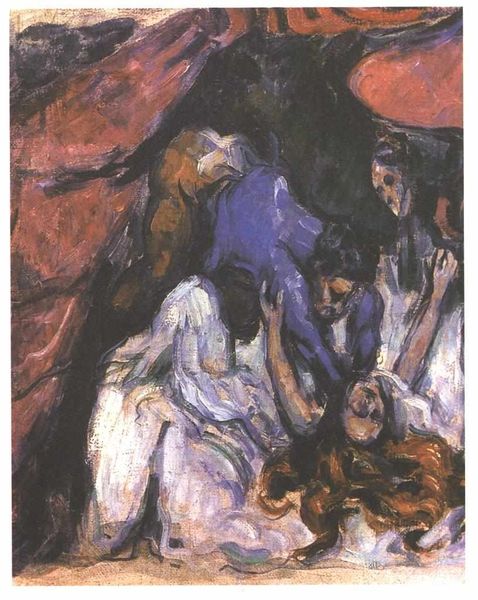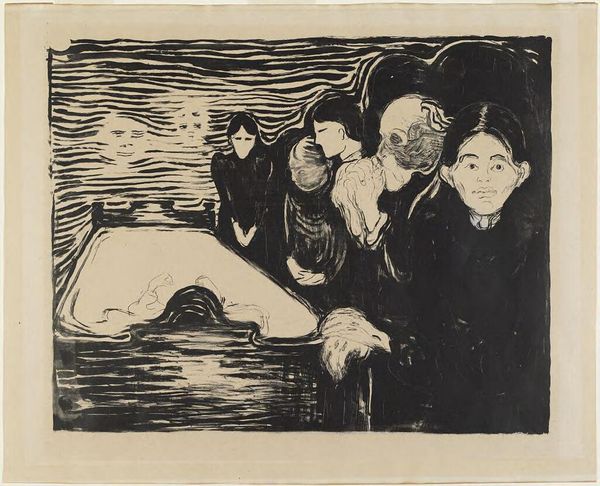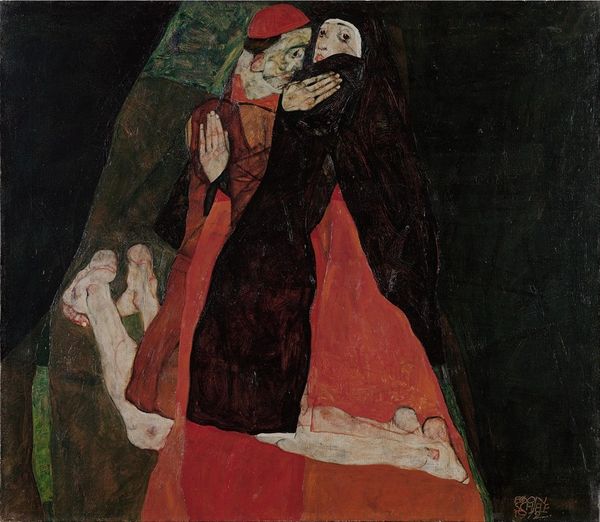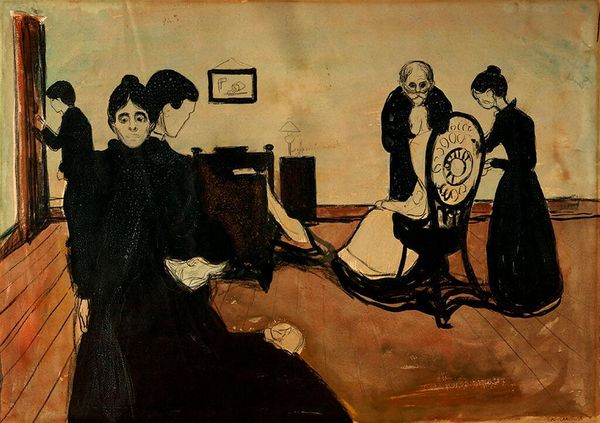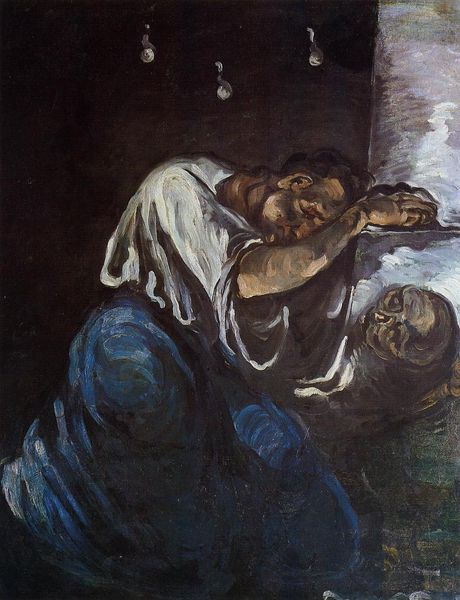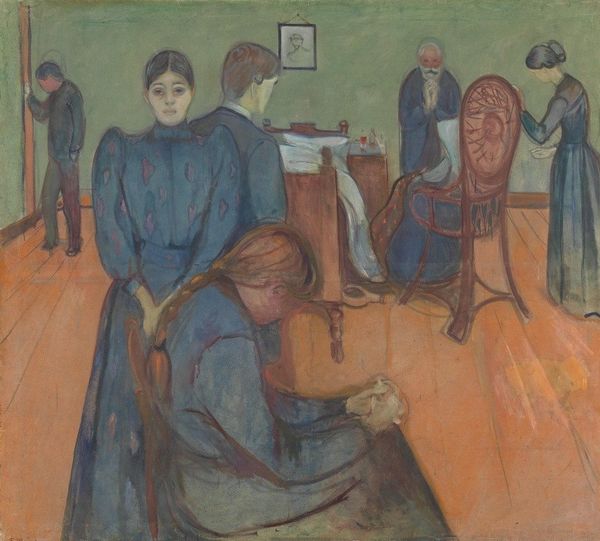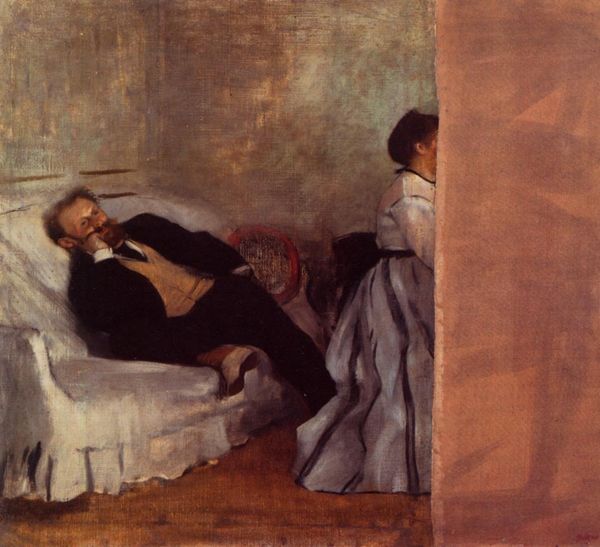
Dimensions: 60 x 80 cm
Copyright: Public domain
Curator: So, we're looking at Edvard Munch's "By the Deathbed (Fever)," painted in 1893, an oil painting that you can currently see at the Munch Museum in Oslo. It's intensely… well, it makes me feel incredibly heavy. Editor: I agree, it’s almost oppressive, a claustrophobic vision. The scene seems lit from within by grief and a kind of sickly light. The stark contrast between the pallid figure in the bed and the dark figures surrounding just heightens the morbid atmosphere. Curator: The pallid skin practically glows against that blood-red wall! Munch was, of course, deeply affected by illness and loss, particularly the death of his mother and sister from tuberculosis. He would have been pretty young at that time... so maybe a decade before he completed this. Editor: The formal arrangement of the figures seems incredibly deliberate, almost theatrical. Look at the faces, drained and mask-like. They are grouped according to a scheme not entirely based on real life. This arrangement feels less like witnessing a scene and more like observing a carefully constructed allegory about grief. What do you make of this allegorical dimension, precisely? Curator: An allegory...yes! Like grief as performance, almost? When my grandmother died, everyone sort of fell into these roles: the stoic patriarch, the hysterical aunt, the blank-faced cousin... It's like we become characters in our own tragedy, maybe so we can survive it, you know? Editor: Precisely! And what’s interesting here is how Munch uses the distortion and elongation of forms, the expressive color, and the surface texture to amplify this feeling. The technique reinforces this vision of intense emotionality—it's a visceral depiction of anguish that bypasses naturalistic representation altogether. He emphasizes emotion by breaking the formal structure a bit. Curator: It does transcend the personal, doesn't it? That shared experience of facing loss is what I think hits you in the gut. It's uncomfortable but so incredibly honest in a way. You see your own memories reflected in it. Editor: Indeed. It's the painting’s ability to evoke a primal feeling that accounts for its profound and continuing effect, I think. The painting acts not so much as a depiction, but instead, it stands for the abstract experience of deep pain and universal empathy.
Comments
No comments
Be the first to comment and join the conversation on the ultimate creative platform.
